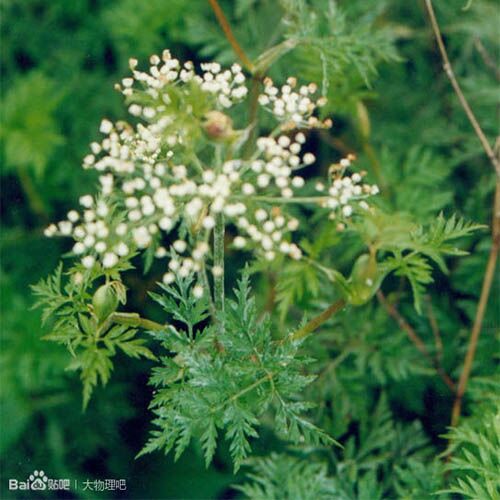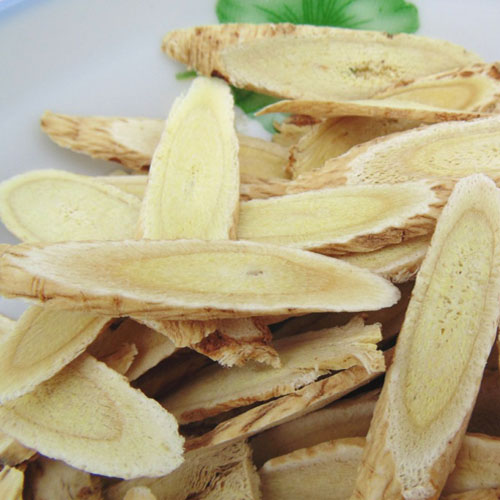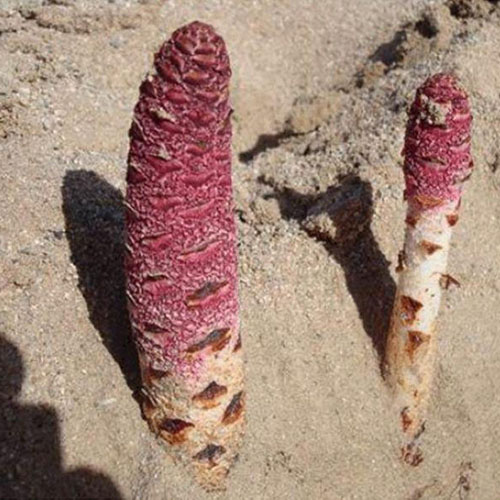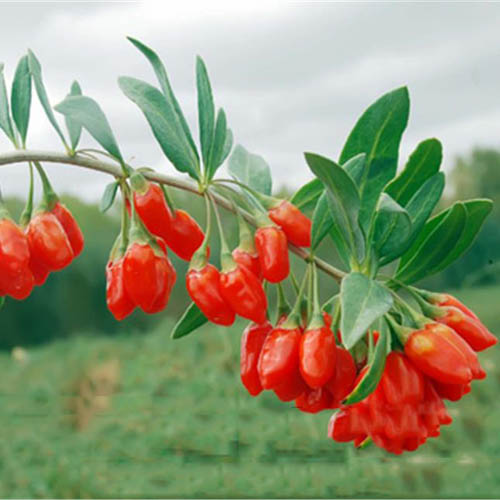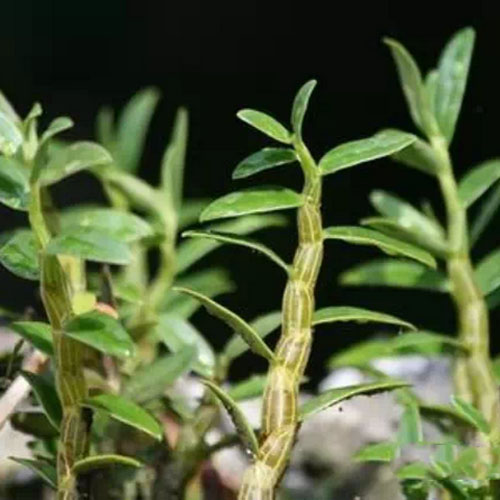- Chinese Name Chuan Xiong 川芎
- Latin Name Ligusticum chuanxiong Hort
- Other Names Rhizoma Chuanxiong, Rhizoma Ligustici Chuanxiong, Rhizoma Ligustici Wallichii, Szechwan Lovage Rhizome, Sichuan Lovage Rhizome
- Used Part Root
- Specification Powdered Extract
Ligusticum Root Extract Powder
Description
Ligusticum is also known as the Chinese lovage, and is one of the most popular herbs in China and Korea, where it grows wild and has been cultivated for centuries. It is a perennial plant with hermaphrodite flowers that are pollinated by insects.
The root and rhizomes are used for herbal remedies. In additional to its medicinal uses, ligusticum can be combined with certain foods and beverages as a flavor component, and to add fragrance to some soaps and cosmetics.
In traditional Chinese medicine, ligusticum has pungent and warm properties, and is associated with the Liver, Gallbladder and Pericardium meridians. Its main functions are to promote the flow of blood and qi, dispel wind, and relieve pain. Many practitioners prescribe it to treat irregular menstrual periods, dysmenorrhea, and headaches. It is also given to patients with inflammation caused by injuries, carbuncles and boils.
Chemical Constituents
The active components in Sichuan lovage rhizome include volatile oils, alkaloids and organic acids. The volatile oils are ligustilide, sabinene, limonene and senkyunolide A-S; the alkaloids are tetramethylpyrazine, perlolyrine, wallichilide, 3-butylidene-7-hydroxyphthalide, (3S)-3-butyl-4-hydroxyphthalide; the organic acids are ferulic acid, sedanonic acid, folic acid, vanillic acid, caffeic acid and protocatechuic acid, etc.
Ancient Story about Ligusticum (Rhizoma Chuanxiong; Chuan Xiong)
According to legend, the medicinal expert Sun Si Miao and his apprentice travelled to Mt. Qingcheng, Sichuan, during the early years of Tang dynasty. One day, while Sun and his apprentice were resting in the Qingsong forest, they saw a big female crane and several baby cranes playing in the stream. After a while, they began to hear continuous scream coming of the baby cranes, and found that the big female crane had bent her head down with both legs shivering. Judging from what he had seen, Sun believed that the female crane was coming down with an acute disease.
The next morning, Sun and his apprentice returned to the forest to look for the sick crane. They easily identified the nest from her loud cry. Shortly after their arrival, they saw several white cranes coming down from the sky and started to toss leaves into the nest. Sun’s apprentice picked a couple of the leaves from the ground out of curiosity, but quickly threw it back after finding that the leaves resemble to that of carrots. However, Sun ordered his apprentice to pick the leave up again for reference.
On the third day, Sun and his apprentice visited the forest again for the sick crane. Strangely, they saw the same white cranes from yesterday circling above the nest of the sick crane. Instead of dropping leaves into the nest, they dropped some small white flowers. Again, Sun ordered his apprentice to pick a few samples of the flower.
On the fourth day, Sun discovered that the sick crane had recovered and was out playing with the baby cranes. He also noticed that the mysterious white cranes stayed a great deal amount of time in a cave near Hun Yuan Ding cliff. Inside the cliff, there was a large green field of unknown plants, with leaves and flowers resemble to what the white cranes had dropped.
Sun suspected that the recovery of the sick female crane must have some kind of connection with the plant. He believed that the plant had the ability to activate the blood and meridian, dispel the wind, and relieve pain. Therefore, Sun took some samples before leaving and started to use it for his patients. With more and more satisfactory results reported from his patients, he named the plant Chuan Xiong, meaning the sky of Sichuan, as the herb were dropped by the cranes in the sky.
How much ligusticum should I take?
The recommended dose of ligusticum is 3-6 grams daily, taken as part of a decoction. Some practitioners recommend a higher maximum dose of up to 10 grams per day. When used as a powder, a lower dose (1-1.5 grams) is administered.
TCM Tradition
Taste & Property Acrid, Warm
Organ Meridians Liver, Gallbladder, Pericardium
TCM Functions
• Invigorates the Blood and promotes the movement of Qi
– Blood Stasis, especially in gynecology with dysmenorrhea, amenorrhea, difficult labor or retained lochia
– Qi and Blood Stagnation with pain and soreness in the chest, flanks and hypochondria
• Expels Wind and alleviates pain
– Externally contracted Wind with headache, dizziness or painful obstruction (Bi Syndrome) – especially useful for headaches due to Wind-Heat, Wind-Cold or Blood Deficiency (depending on the combination)
– Wind skin disorders
Science Research
Pharmacological Actions
The pharmacological actions of Sichuan lovage rhizome include protection against coronary and cerebral ischemia, anti-platelet, anti-coagulant, anti-spastic, sedative and pain relief, etc.
1. Cardio-protective effect
Ex vivo study
A study investigated the protective effect of Chuanxiong-pathalide A (CXPA), ingredient of Sichuan lovage rhizome, on the injury of vascular endothelial cell induced by ischemia and reperfusion. Isolated rat hearts were perfused with CXPA at different concentrations followed by the induction of global ischemia and reperfusion. Results showed that CXPA can reduce the incidence and duration of reperfusion-induced ventricular fibrillation (VF) and ventricular tachycardia (VT), and increase coronary flow in isolated rat heart. It shows that CXPA pretreatment can protect against heart damage caused by ischemia and reperfusion.
2. Neuroprotective effect
Animal study
Study investigated the neuroprotective mechanisms of Tetramethylpyrazine (TMP), constituent of Sichuan lovage rhizome, in artery occlusion rat models. TMP was pre-treated before occlusion via intraperitoneal injection. The results showed that the neuronal loss and brain infarction were markedly lowered by treatment with TMP. The study also found out that TMP might provide its neuroprotective effect through suppression of inflammatory reaction, reduction of neuronal apoptosis, and prevention of neuronal loss.
3. Anti-platelet effect
In vitro study
The inhibitive effect of the active ingredient, Tetramethylpyrazine (TMP), on shear-induced platelet aggregation (SIPA) was investigated using blood from rats. Blood was first collected, and different doses of TMP were added to the platelet-rich-plasma (PRP). Then the PRP was transferred to a platelet aggregometer and determined the SIPA. The results show that SIPA was inhibited by TMP in a dose-dependent manner.
4. Analgesia effect
Animal study
Study has shown that oral administration of volatile oil from Sichuan lovage rhizome (SLRVO) to mice can significantly elevate the pain threshold in the hot-plate test and reduced the number of abdominal writhing caused by acetic acid. Another study using rabbits showed that SLRVO can significantly increase the pain threshold of headache due to hot radiation. These results suggest that SLRVO is probably the active ingredient of Sichuan lovage rhizome on treating pain and has potential to be an agent for treating headache.

